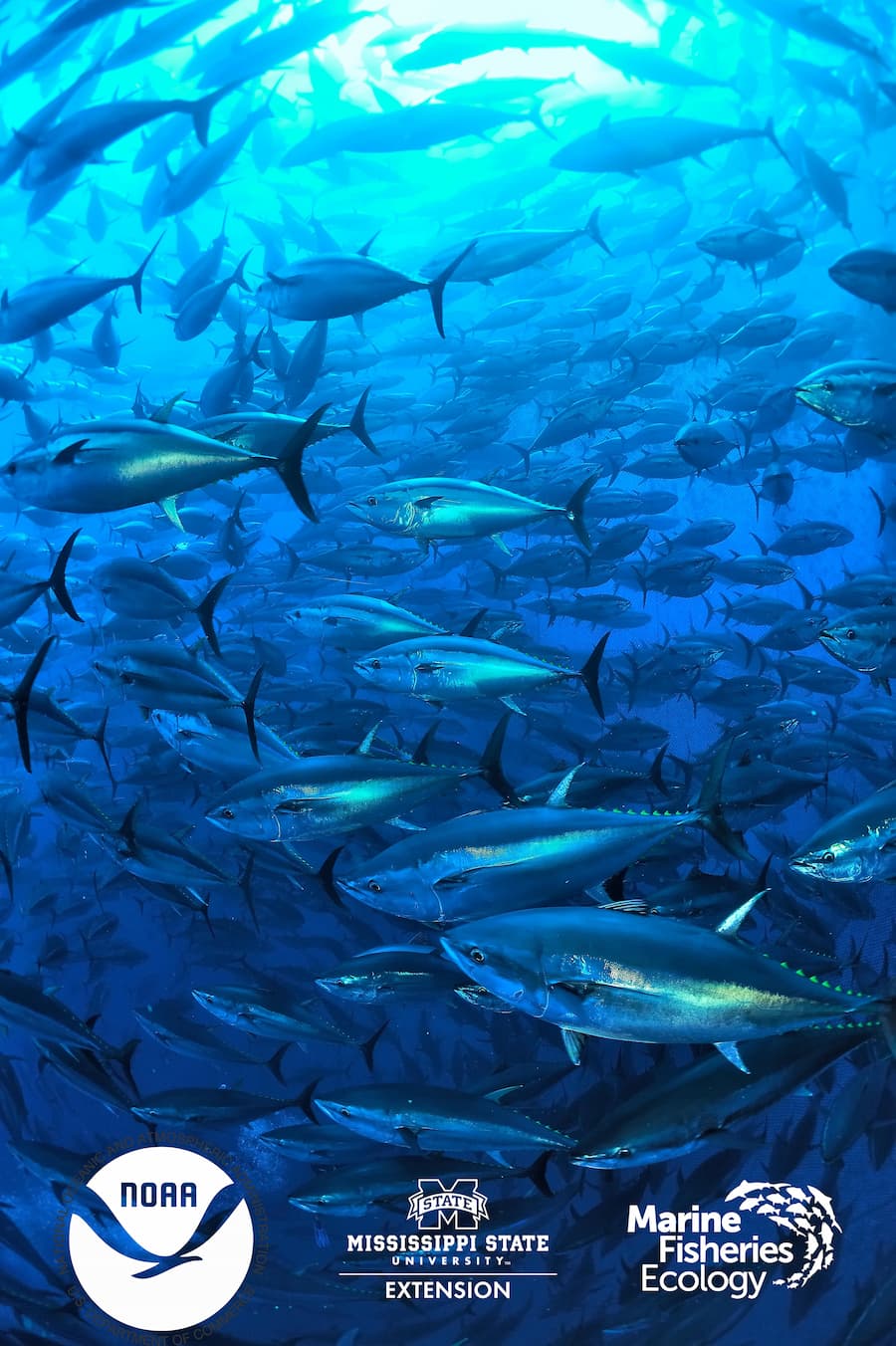Research | Gulf Research Institute for Highly Migratory Species (GRIHMS)
Research Projects
- Migration ecology of tarpon in the NW Gulf of Mexico
- Origin and trans-Atlantic migrations of yellowfin tuna in the Atlantic Ocean
- Habitat and ecosystem connectivity of fishes on natural banks in the Flower Garden Banks NMS
- Movements and post-release survival and behavior of coastal sharks
- Population connectivity of apex predators in Cuba-Mexico-US waters
- Feeding ecology and environmental contaminants in top predators
- Movement and population connectivity of greater amberjack
- Bluefin tuna restoration
Migration ecology of tarpon in the NW Gulf of Mexico
Tarpon are capable of long-distance migrations and commonly display movements over hundreds of kilometers. Tarpon commonly cross state and international management boundaries presenting a challenge when creating and implementing regulations. Working alongside local fisherman, we have begun deploying acoustic and satellite tags on adult tarpon to identify migration trends and pathways. These electronic tags provide valuable information about the directionality and timing of these movements. Preliminary data indicates the presence of two migratory contingents in the Gulf of Mexico forming an eastern and western stock separated by the Mississippi River Delta. Characterizing migration patterns and population dynamics of tarpon in the Gulf of Mexico will provide insight that can be used for making effective management decisions to better protect the species.
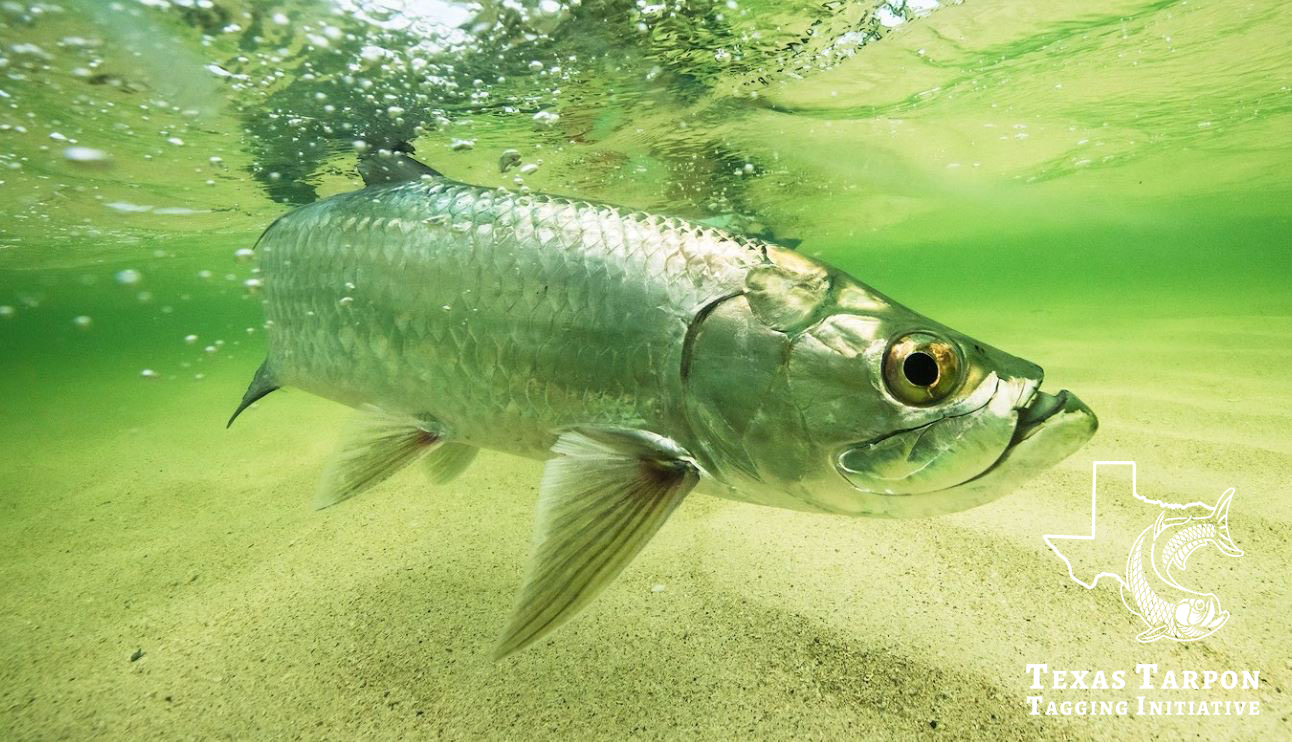
Origin and trans-Atlantic migrations of yellowfin tuna in the Atlantic Ocean
Several spawning areas exist for yellowfin tuna in the Atlantic Ocean, but the key production zone is centered in equatorial waters off the west coast of Africa (Gulf of Guinea) with additional spawning and/or nursery areas in the Caribbean Sea and Gulf of Mexico. Currently, the magnitude of trans-Atlantic migrations and the degree of mixing by migrants from different production zones is unknown. In this study, we are using geochemical markers in the otoliths (ear stones) of age-0 tunas from the different production zones to develop chemical “birth certificates” to determine the origin of sub-adult and adult yellowfin tuna in the Gulf of Mexico. Findings to date indicate that the yellowfin tuna fishery in the U.S. Gulf of Mexico is supported in part by local production; however, a significant fraction of the Gulf population is comprised of trans-Atlantic migrants from production zones off Africa.
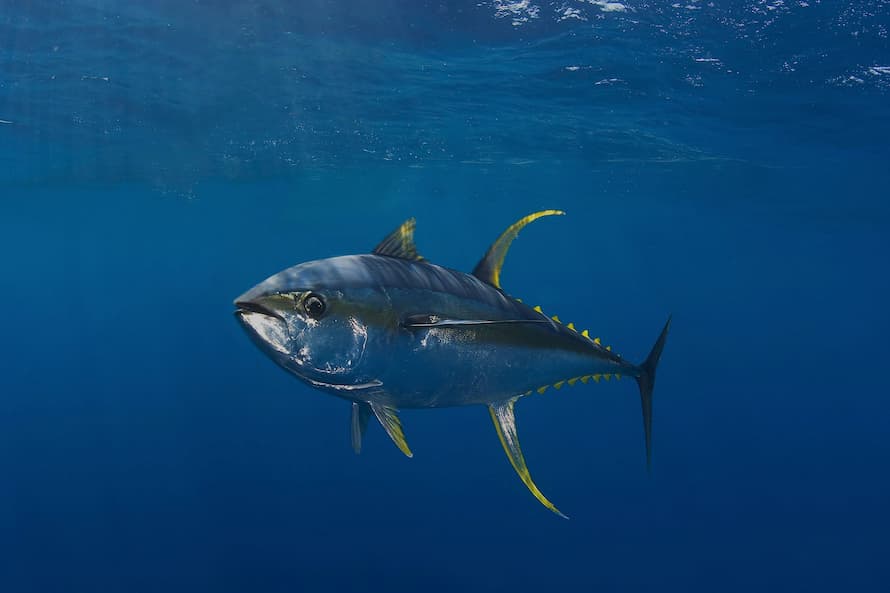
Habitat and ecosystem connectivity of fishes on natural banks in the Flower Garden Banks NMS
The Flower Garden Banks National Marine Sanctuary (FGBNMS) was established as a marine protected area (MPA) to conserve the unique habitats and organisms of shelf-edge and mid-shelf banks in the northern Gulf of Mexico. This project will use several novel approaches to characterize the habitat requirements and movements of several taxa (grouper, snapper. sharks, tunas) associated with natural banks in the FGBNMS. Movements and migrations of sub-adult and adult fishes will be assessed using acoustic and satellite telemetry, and this project will rely on an extensive network of acoustic receivers positioned on mid to outer shelf locations in the NW-NC Gulf of Mexico. This project will also use biophysical models to estimate larval dispersal and inter-bank or population connectivity of several reef-associated species during the early life period
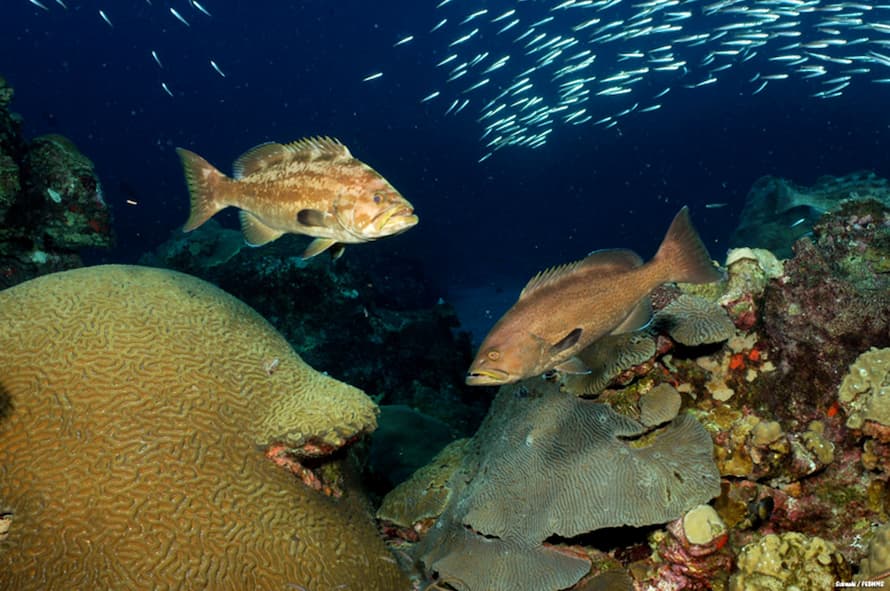
Movements and post-release survival and behavior of coastal sharks
Capture of sharks on fishing gear can result in physical injury and physiological stress. Low reproductive potential of sharks relative to other bony fishes that are frequently captured makes sharks particularly vulnerable to over-exploitation. Global declines of shark populations has led to conservation concerns and examination of the factors leading to fishing mortality. Current studies examining the post-release survival of sharks collected in several fisheries are being investigated throughout the Gulf of Mexico. Results to date suggest different species of sharks are more susceptible to higher post-release mortality than others and the handling procedures within a fishery and region of the Gulf is important to their survival. We are also examining the movement patterns of several predatory sharks and the role of oceanographic and environmental parameters on their distribution and movement dynamics.
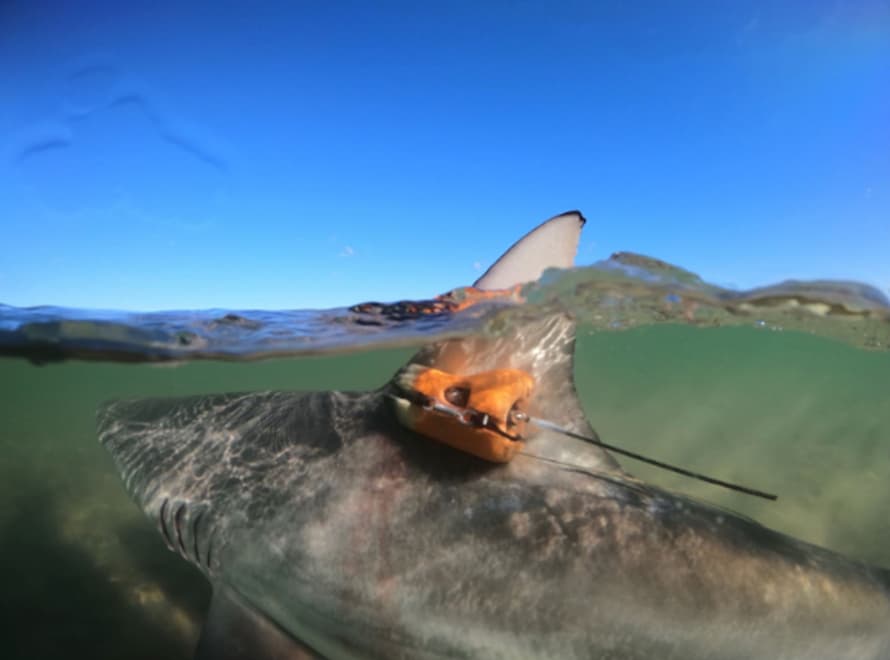
Population connectivity of apex predators in Cuba-Mexico-US waters
The aim of this research is to characterize the spatial and temporal (seasonal) distribution of selected pelagic fishes (billfishes, tunas, sharks) in the Gulf of Mexico to better understand the significance of population connectivity and use of the territorial waters within the Cuba-Mexico-U.S. triangle. Currently, our assessment is based on satellite tagging conducted in U.S. waters of the Gulf. To date, our results show that transnational movements of these highly mobile marine predators are pronounced with varying levels of bi- or tri-national population connectivity displayed by each species. Billfishes and tunas moved throughout the Gulf of Mexico and all species investigated (blue marlin, white marlin, Atlantic bluefin tuna, yellowfin tuna) frequently crossed international boundaries and entered the territorial waters of Cuba and/or Mexico. Certain sharks (tiger shark, scalloped hammerhead) displayed prolonged periods of residency in U.S. waters with more limited displacements, while whale sharks and to a lesser degree shortfin mako moved through multiple jurisdictions.
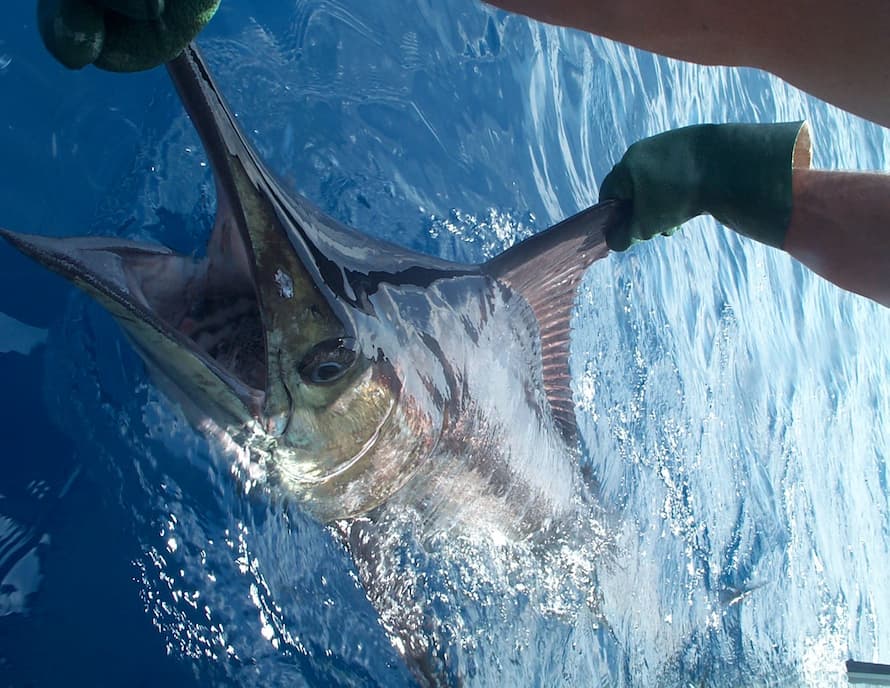
Feeding ecology and environmental contaminants in top predators
Top predators such as billfishes, sharks, swordfish, and wahoo are ecologically and economically important members of the pelagic ecosystem. These predators function as keystone species and exhibit top-down control on their food webs, indicating that negative anthropogenic pressures, such as pollution, may impact all levels of the food web. Additionally, many of these species are highly migratory, which can expose them to exploitation from various countries as they frequently cross international boundaries. Using novel dietary tracers and contaminant biomarkers, we are evaluating the trophic ecology and contaminant body burdens of several top predators in the Gulf of Mexico and Atlantic Ocean to elucidate the relationship between trophic position and bioaccumulation and biomagnification of environmental contaminants.
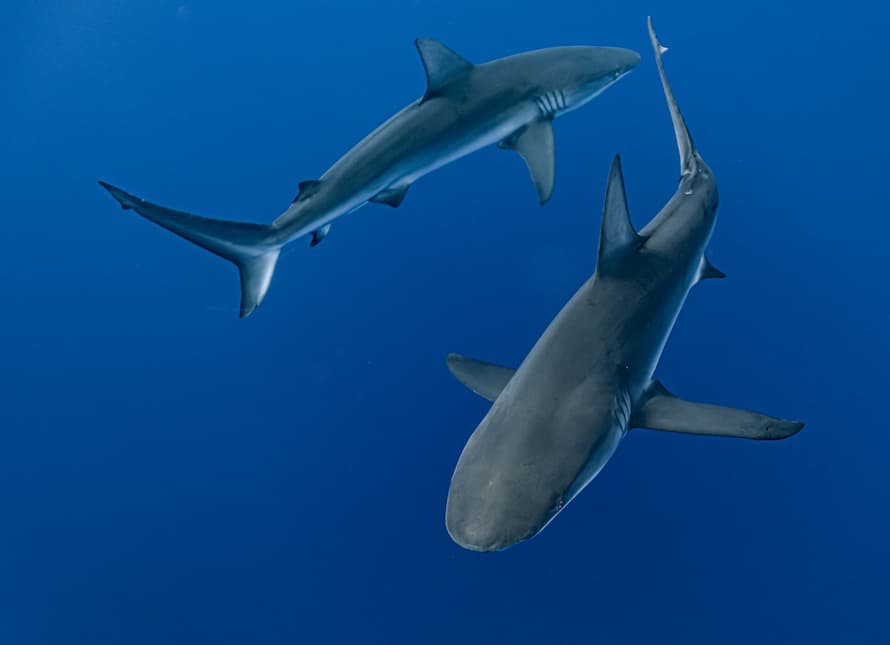
Movement and population connectivity of greater amberjack
According to NOAA Fisheries, greater amberjack in the U.S. Gulf of Mexico are overfished. The goal of this consortium project is to quantify the number of greater amberjacks in the Gulf of Mexico. Since movements alter local population sizes, one aim of this project is to investigate the habitats requirements and movements/migrations of greater amberjack. This project will take advantage of the telemetry infrastructure already in place through the FGBNMS project (described above) and this acoustic network will be complemented by investigators from TAMUG, LSU, and TAMU-CC deploying additional receivers in the NC-NW Gulf of Mexico. The acoustic network includes receivers on both artificial and natural reefs to assess the value of each as well as exchange rates (movements) of greater amberjack between the two reef types.

Bluefin tuna restoration project
The Gulf of Mexico (GoM) is a critical spawning ground for Atlantic bluefin tuna. Thus, targeted fishing for these tuna is highly regulated in the GoM. Although the GoM pelagic longline (PLL) fishery targets other tuna species, bluefin tuna bycatch is a concern. The bluefin tuna restoration project originates from previous data indicating that yellowfin tuna inhabit a broad range of depths, while bluefin tuna use a narrow range of depths that overlaps with PLL fishing gear. We will examine the effectiveness of deeper longline sets for reducing bluefin tuna bycatch by recruiting PLL fishermen to complete alternating longline sets, which will consist of one typical set and one deep set. Deep set buoy lines will range from 20 - 24 fathoms, versus the typical 10 - 12 fathoms. We will also deploy satellite tags on yellowfin and bluefin tuna to better understand their migration and behavioral patterns. Ultimately, we hope to identify new fishing approaches to facilitate effective bluefin tuna restoration efforts. This project is funded by the Deepwater Horizon Open Ocean Trustees. This project is being implemented in partnership with Mississippi State University’s Marine Fisheries Ecology Program, NOAA Fisheries Office of Habitat Conservation’s Restoration Center, and NOAA Southeast Fisheries Science Center.
